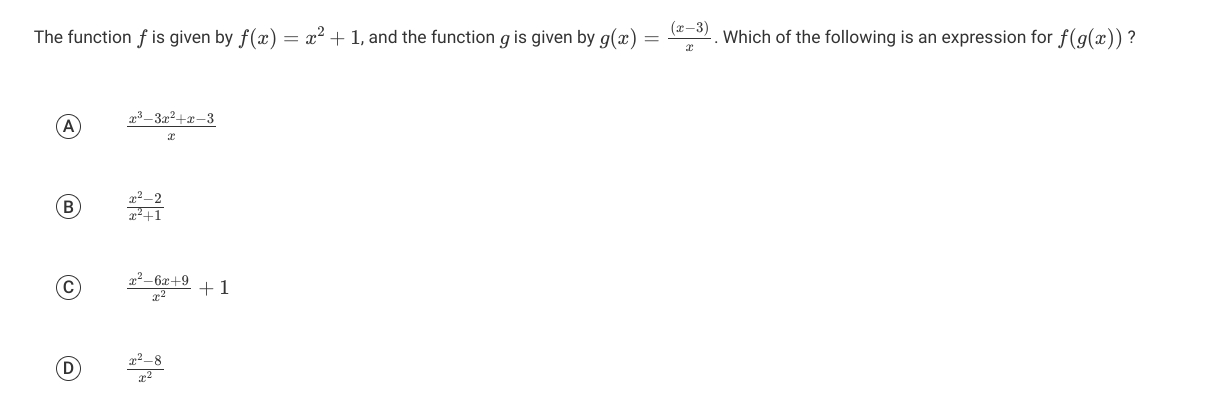Full solution
Q. The function is given by , and the function is given by . Which of the following is an expression for ?(A) (B) (C) (D)
- Substitute into : First, we need to substitute the expression for into the function .So,
- Replace in : Now we will replace every instance of in with .
- Expand binomial square: Next, we will expand the square of the binomial .
- Combine terms: Now we will combine the terms over a common denominator.
- Simplify numerator: We simplify the numerator by combining like terms.
- Check for mistakes: We notice that the expression is not among the answer choices, so we must have made a mistake. Let's go back and check our work.

